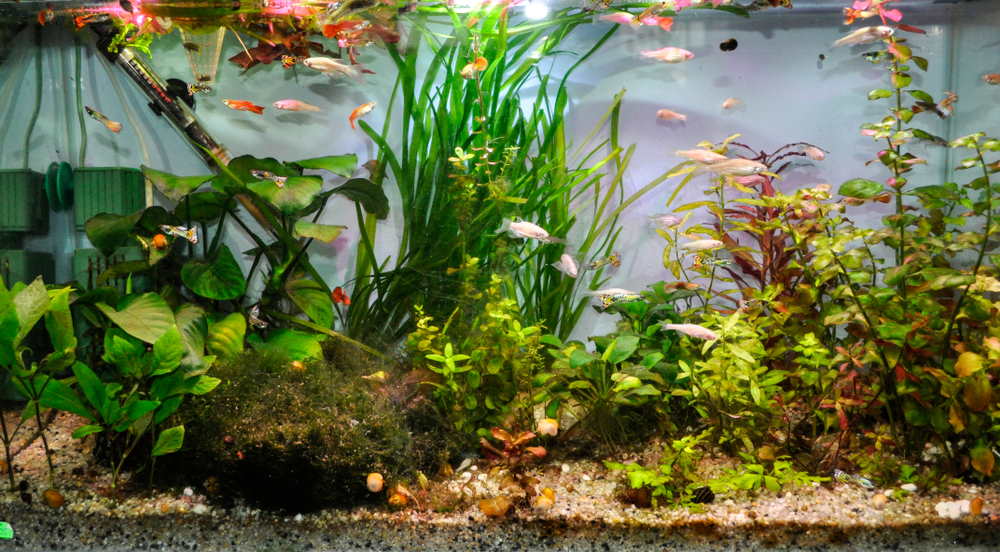How to Choose the Right Aquarium Heater
One of the most common questions we get is, “Does my aquarium need a heater?” Well, most fish are cold-blooded animals that rely on the surrounding waters to regulate their body temperature, and most freshwater pet fish are tropical species that enjoy balmy temperatures around 78-80°F. So, if you usually keep your home cooler than that, then the answer is yes.
Now it’s true that the majority of aquarium fish can tolerate cooler temperatures than recommended because in nature, the environment dips several degrees at night or during rainstorms. However, keeping the water at a steady warm temperature is less stressful on your fish and therefore helps prevent diseases. Some species – like goldfish, Japanese ricefish, and white cloud mountain minnows – enjoy cooler temperatures and would be fine without a heater. Other fish – like discus, ram cichlids, and certain Apistogramma cichlids – prefer hotter temperatures around 85°F and require a heater.
What Size Aquarium Heater Do I Need?
The general rule of thumb is 5 watts (W) of heat per 1 gallon of water if a) you need to heat the water up to 10 degrees above room temperature and b) you’re using an aquarium lid to retain warmth and prevent evaporative cooling. For example, if you have a 29-gallon tank under those conditions, the suggested heater size is 100 watts. However, if your home is on the colder side at 65°F and you need to raise the water temperature by 15 degrees, then consider adding a second heater.

Recommended heater sizes for different types of aquariums
Other factors that impact a fish tank’s temperature include its location in your home. Is it placed in a sunny room, down in the basement, or right next to the air conditioner? Also, because heat naturally rises, the tanks at the bottom of an aquarium rack will be cooler than the tanks at the top. Furthermore, equipment such as lighting and filtration contribute to the total heat produced in an aquarium. For example, a Fluval FX4 canister filter runs on 30 watts of power and therefore acts like a mini heater in your aquarium, slightly heating up the water as it flows through the filter.
If you own a larger tank that requires 200 watts of heat, we recommend purchasing two 100W heaters rather than one 200W heater. Using multiple, smaller heaters reduces the damage caused by equipment malfunction. If one of the heaters gets too hot, it’s likely not powerful enough on its own to overheat the whole aquarium. If one heater shuts off, then you have a second heater as a backup that will prevent the water from getting too cold.
Where Should I Put My Aquarium Heater?
There are many kinds of aquarium heaters, but we’re going to talk about the most common type – submersible heaters that operate completely underwater. The water current helps to spread the warmth from the heater to the rest of the tank, so ideally the heater should be placed right next to the filter output or pump for maximum flow. Install a thermometer in a corner opposite from the heater to make sure the heat is reaching the other side of the tank.
Some heaters must always be positioned vertically, while others can lay down horizontally. For long, tube-shaped heaters, we recommend mounting the heater at a 45 degree angle to get the best heat distribution. You can conceal the heater by placing plants and decor in front of it or hiding it in the sump if you have one.

Mount the heater at a 45 degree angle and conceal it with tall plants or decorations.
Do You Leave the Aquarium Heater on All the Time?
Yes, you can leave the heater on 24/7. Aquarium heaters have an internal thermostat that turns off the heat when it reaches a specific temperature, thus keeping the water temperature within a few degrees of the desired setting.
When first installing the heater, let the equipment acclimate to the aquarium water’s temperature for 20 to 30 minutes before plugging it in, to prevent breakage from temperature shock. Also, the heater must always be submersed in water when it’s turned on. (Sometimes you’ll see a line on the heater that marks the minimum water level.) Otherwise, it cannot accurately read the water temperature and correctly control the heating. If you leave the heater running while exposed to dry air, it may burn out or crack, so don’t forget to unplug it or turn off the power strip when doing water changes.
Thankfully, heaters do not require much maintenance unless you want to use a toothbrush to gently scrub off algae. However, if you have to remove the heater for some reason, manufacturers advise waiting at least 30 minutes for it to cool down before handling.
What Is the Best Aquarium Heater?
Out of all the supplies you need to buy when setting up a new fish tank, the aquarium heater is not one to skimp on. You want to find a good quality brand that is safe and reliable because unproven brands may fail by overheating, shutting down, or cracking – all with disastrous results. We personally would not recommend getting a used heater because you have no idea if the previous owner dropped it, left it running while out of water, and so forth.
If you have a nano aquarium that holds 6 gallons or less, consider using a 25W or less powerful aquarium heater, depending on the room temperature of your home.
Bottom line: don’t try to save money on heat. Give your aquarium fish a warm and comfortable home, and they’ll thank you for it with hours and hours of entertainment.




